How do the Dutch celebrate Christmas? For most children in the Netherlands, December 5 is the most important day!
20. 3. 2024
What will you learn in this article?
The Christmas holidays in the Netherlands are much less spectacular than most of us would expect.
How do the Dutch spend them?
Who is Sinterklaas, and who is Kerstman?
And what do you need a portable grill for?
You will learn more about how Christmas is celebrated in the Netherlands in the following lines.
When is Christmas celebrated in the Netherlands?
Every culture has its holiday traditions that embody the spirit of the season with a unique atmosphere characteristic of that nation. In the Netherlands, holiday traditions include Sinterklaas Avond (Santa Claus) and “hoornblaazen” (blowing horns in the middle of winter to herald Advent). As such, Dutch Christmas is celebrated on December 25 and 26.
December 25 is known as Eerste Kerstdag, but because most gifts are given out on Sinterklaas Avond, this day is a time for quiet church services and traditional family meals. The second day of Christmas, known as Tweede Kerstdag, is when people visit relatives or go to the shops for entertainment and shopping.
Do you know Dutch Christmas traditions?
The Sinterklaas Avond celebrations start a few weeks before December 5th, the first Saturday after November 11th. Sinterklaas is believed to live in Madrid, Spain, and arrives with great fanfare on a steamer at the start of the holidays.
Amsterdam and other port cities usually hold large celebrations to herald his arrival, including parades, the ringing of church bells, and children’s parties. Custom Christmas decorations in the Netherlands include rustic decorations such as pine and holly branches, lights, and candles.
Who brings the children’s presents?
Sinterklaas Avond is celebrated every year on December 5, considered the eve of Nicholas’ birthday. On this eve, Sinterklaas travels to the homes of all the children in the Netherlands, leaving small gifts and treats for them. Children leave shoes filled with hay, carrots, and sugar for Sinterklaas’ horse.
His helpers accompany Sinterklaas, the Black Peters (Zwarte Piet), who is dressed in 16th-century Spanish clothing to symbolize Spain’s dominance over the Netherlands during this period. Black Peter has a soot-covered face and rides a donkey, which contrasts sharply with the more cheerful colors of Sinterklaas’s red robe and white horse.
Black Peter goes through the chimney of every house and leaves gifts for children, although in some legends, it is said that he also punishes disobedient children.
On December 25, Kerstman, or the Dutch version of Santa Claus, arrives from Finland and brings small gifts to the children, as most of the principal gifts have already been distributed on Nicholas Day.
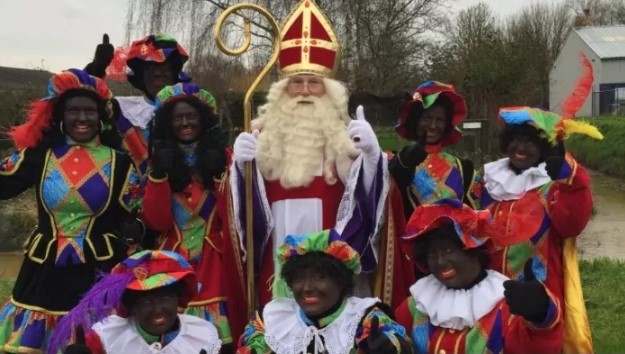
What is eaten in the Netherlands at Christmas?
A decadent dinner on Sinterklaas Avond usually includes venison or roast goose, pork, vegetables, and homemade bread. Roasted chestnuts and kerststol, a “bread” with nuts, almonds, and dried fruit in the style of a Christmas tree, are also famous.
Similar articles
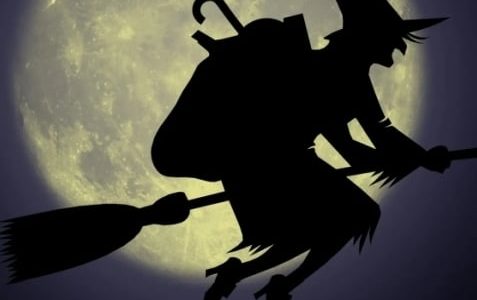
How do Italians celebrate Christmas and what are their customs?
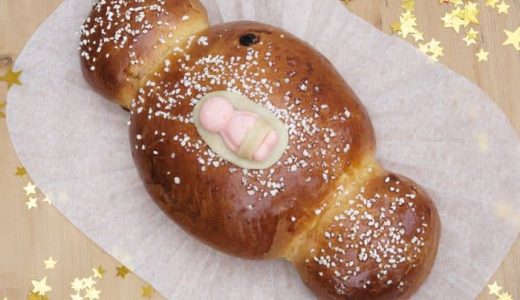
Do you know how Christmas is celebrated in Belgium? Learn about Belgian Christmas traditions in our article

How is the traditional French Christmas celebrated? Who is Père Noël and what is Réveillon?
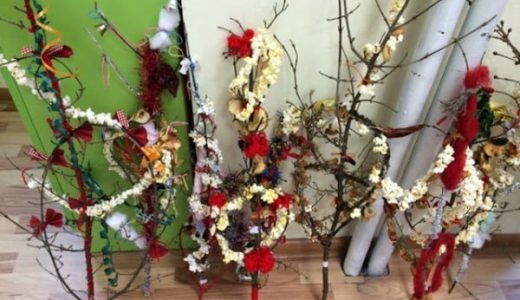
Learn about Bulgarian Christmas customs and bake delicious baklava!
Many families bake a special dessert called banquet letter, which is in the shape of the letter S or the first letter of each family member’s name, and buns with fruit and nuts (stollen).
Christmas Day itself is a much quieter day in the Netherlands. There is a church service and family meals. The traditional way of dining in a family circle is called gourmetten.
It is an activity in which a group of people sit at a table on a grill, griddle, or similar device and cook their dish from the various ingredients. After the food is eaten, something new can then be cooked.
It might remind you of raclette, but while raclette is made with cheese, gourmetten includes meat, fish and vegetables. Another option is baking small omelets or pancakes. The whole dish is often decorated with various sauces.
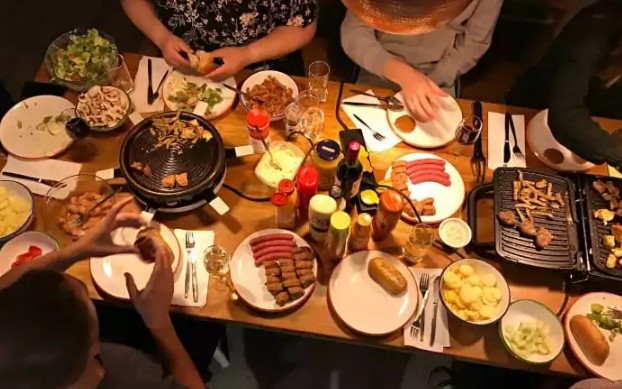
How to bake your “banketletter”?
This Dutch Christmas pastry is often made from puff pastry, making it relatively easy to shape it into any letter. The most common use is S for Sinterklaas or the first letters of family members.
Ingredients:
- 16 oz puff pastry
- 1 cup almond flour
- 1 cup of sugar
- 3 eggs
- 1 teaspoon of lemon zest
- 1 teaspoon of almond extract
- almonds, marmalade, candied fruit garnish
Method:
- First, prepare the almond paste.
- Mix two eggs with almond flour and sugar.
- Add the lemon zest and almond extract.
- Mix everything thoroughly and refrigerate for at least one day.
- The next day, roll out the puff pastry into a thin, oblong rectangle.
- Apply the almond paste in the form of a roller to its center.
- Then, wrap the puff pastry around it.
- Moisten the edges with a bit of water and press them together well.
- Cut off the excess dough.
- Place the filled dough on a baking sheet lined with baking paper.
- Then, shape it into the desired letter, for example, S.
- Brush with beaten egg and refrigerate for 30 minutes.
- Preheat the oven to 428°F.
- Remove the dough from the refrigerator and brush it with the beaten egg.
- If you are using almonds for decoration, sprinkle them over the pastry.
- Bake for approximately 20 minutes, depending on the thickness of the dough.
- Decorate the baked dessert according to your preferences.
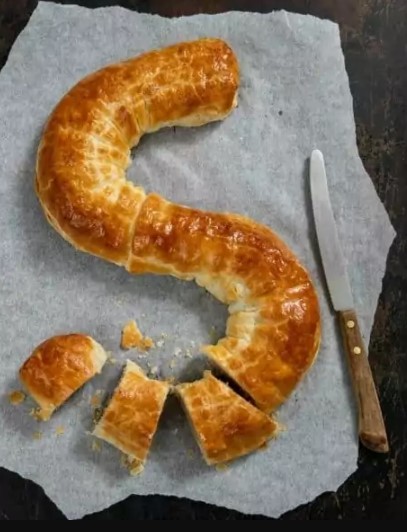
What places to visit in Holland at Christmas?
Christmas in the Netherlands offers plenty of opportunities to visit historical monuments and museums, as well as to ice skate on the local canals.
- Amsterdam—One of the main attractions of winter in Amsterdam is the frozen water in the local canals, which practically turn into ice rinks. Even if you’re not into skating, it’s a unique experience. In addition, the whole city is beautifully decorated for Christmas every year.
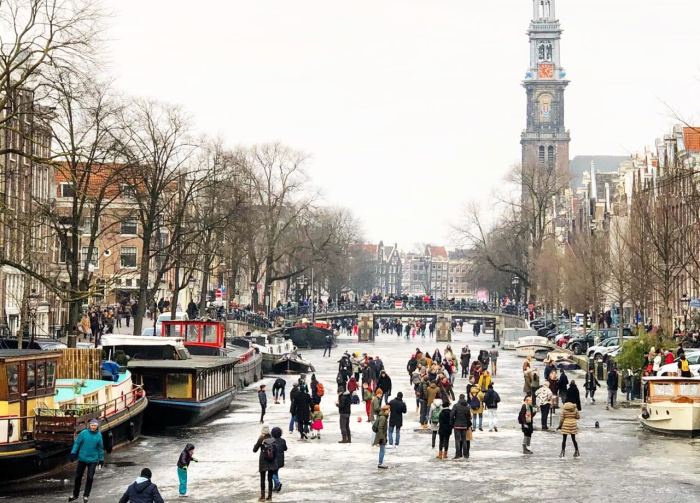
- Maastricht—Christmas markets are held in the city center annually, taking up the entire Vrijthof square. In addition to dozens of stalls with handmade crafts and local delicacies, there is a Ferris wheel and an ice rink.
- Groningen – is famous for several reasons, including the Winterwelvaart, a famous Christmas market. As in Amsterdam, Groningen also has fascinating museums, such as the Noordelijk Scheepvaartmuseum, housed in two historic buildings: the Gotisch Huis and the Canterhuis. The museum provides a unique insight into the rich maritime history of the Netherlands.

